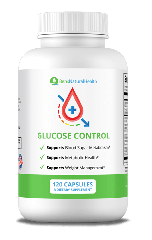- Q: What Are Fluoroquinolone Antibiotics?
- Q: What are the Differences Between Levofloxacin vs Ciprofloxacin?
- Q: How Effective Are They Against Different Bacteria?
- Q: What are the Similarities Between Ciprofloxacin and Levofloxacin?
- Q: Are Levaquin and Cipro the Same Thing?
- Q: Which is More Effective, Levofloxacin or Ciprofloxacin?
- Key Patient Questions on Levofloxacin vs Ciprofloxacin
- Conclusion
- Our Medical Review Process
- Our Editorial Guidelines
- Medical Disclaimer
- Source
If you’ve been prescribed a fluoroquinolone antibiotic for an infection, you might be wondering how to choose between levofloxacin vs ciprofloxacin. Both drugs belong to the broad-spectrum fluoroquinolone family, but they aren’t identical.
We spoke with Dr. Menna Salman, a renowned specialist in infectious diseases, who provided insights based on studies and clinical experience. In our discussion, Dr. Menna Salman compared the two drugs, detailing their formulations, dosages, similarities, and differences, to help you understand which may be better suited for your condition.
A medical doctor has thoroughly reviewed all the information shared to ensure accuracy and reliability.
Q: What Are Fluoroquinolone Antibiotics?
Dr. Salman answers: Fluoroquinolones are a family of broad-spectrum antibiotics that function by blocking two enzymes necessary for bacterial DNA production: bacterial DNA gyrase and topoisomerase IV. Fluoroquinolones cause bacterial cell death by interfering with bacterial reproduction by inhibiting these enzymes. This will make them effective against multiple gram-positive, gram-negative, and atypical pathogens. Fluoroquinolones include Ciprofloxacin (Cipro), Moxifloxacin (Avelox), Levofloxacin (Levaquin), Ofloxacin (Floxin), and Norfloxacin (Noroxin).
Q: What are the Differences Between Levofloxacin vs Ciprofloxacin?
Dr. Salman answers: Although levofloxacin and ciprofloxacin are both fluoroquinolone family members, their formulation, dosing, range of action, indications of usage, and adverse effect profiles vary.
Formula: Ciprofloxacin can be administered in three ways: topically, intravenously, and orally. Levofloxacin is available as oral tablets or intravenous injections. This variation in the formula can affect the decision of medication selection.
Dose: While ciprofloxacin calls for a twice-daily dosage, levofloxacin’s longer half-life allows for once-daily dosing, hence enabling patient compliance with treatment.
Range of Action: Levofloxacin and ciprofloxacin tackle microorganisms in different ways. Levofloxacin is classified as a “respiratory fluoroquinolone” because of its potent action against Streptococcus pneumoniae (a Gram-positive organism that frequently causes community-acquired pneumonia). Ciprofloxacin has a lower effect against Streptococcus pneumoniae bacteria than levofloxacin which limits its usage in respiratory infections. However, it has a potent action against Gram-negative bacteria such as Pseudomonas aeruginosa, Klebsiella, and Escherichia coli.
Indications: The previous variations in bacterial coverage affect the therapeutic applications; for example, levofloxacin is usually chosen for respiratory tract infections, such as pneumonia, sinusitis, and bronchitis. While Ciprofloxacin is not the first-line treatment for respiratory infections because of its limited coverage against the important bacteria causing it, it is widely used to treat simple and complex urinary tract infections, gastrointestinal infections, and bone and joint infections.
Side Effects: Both antibiotics have similar class-related side effects, including inflammation of tendons, tendon rupture, peripheral neuropathy, and central nervous system effects, such as disorientation or seizures, especially in older persons. However, there are specific side effects related to each one. Levofloxacin can increase the risk of QT prolongation (a heart rhythm problem), which should be considered when prescribing levofloxacin to patients with heart disease. Ciprofloxacin can interact with other drugs, so patients on several medications sharing the same metabolic routes should be aware of this potential interaction.

Q: How Effective Are They Against Different Bacteria?
Which One Works Better on Gram-Positive Bacteria?
Dr. Salman answers: Levofloxacin is more effective against gram-positive bacteria, especially Streptococcus pneumoniae. This makes it a better option for respiratory infections such as pneumonia. Clinical trails found that levofloxacin had lower minimum inhibitory concentrations (the lowest concentration of an antibiotic necessary to stop the visible growth of a bacterium) against S. pneumoniae than ciprofloxacin, which reflects its better potency.
Which Is Stronger for Gram-Negative Infections?
Dr. Salman answers: Among several gram-negative bacteria, including Pseudomonas aeruginosa, ciprofloxacin is thought to be more powerful. A study that reviewed the effectiveness of Levofoxacin and Ciprofoxacin in treating urinary tract infections revealed no notable difference between the two medications regarding clinical success rates and microbiological eradication rates. However, given Pseudomonas aeruginosa, ciprofloxacin has been preferred because it has a stronger action.
Do They Treat Atypical Pathogens Effectively?
Dr. Salman answers: Levofloxacin is generally preferred for respiratory infections caused by atypical organisms like Mycoplasma pneumoniae, Chlamydia pneumoniae, and Legionella pneumophila. A study performed during a community outbreak of Legionnaires’ disease in Murcia, Spain, looked at how well levofloxacin and macrolides treated Legionella pneumophila pneumonia. Patients with severe pneumonia treated with levofloxacin had fewer problems and a shorter average hospital stay than those treated with macrolides, according to the research. This implies that levofloxacin might be more successful than macrolides in controlling severe L. pneumophila pneumonia.
Q: What are the Similarities Between Ciprofloxacin and Levofloxacin?
Dr. Salman answers: Both ciprofloxacin and levofloxacin are fluoroquinolone antibiotics, which means they share a common mechanism of action. They are capable of killing many of the same bacteria, including those responsible for tuberculosis, brain infections, urinary tract infections, and wound infections. Their oral formulations are as effective as IV therapy. They share the same side effects, which include gastrointestinal upset, CNS symptoms like dizziness or headache, and tendon rupture.
A study compared the action of levofloxacin to ciprofloxacin in treating skin and skin structure infections. It found that both had comparable clinical success and bacterial eradication rates, but the choice should be based on the kind of infection and patient-specific characteristics.
Q: Are Levaquin and Cipro the Same Thing?
Dr. Salman answers: Although levofloxacin (often known by its brand name, Levaquin) and ciprofloxacin (commonly called Cipro) are both members of the fluoroquinolone family, they are not the same drug. They differ in their chemical structures, their actions against bacteria, the side effects they may cause, and the way they are metabolized in the body. These differences mean that while they may be used for similar infections, they are not interchangeable.
Q: Which is More Effective, Levofloxacin or Ciprofloxacin?
Dr. Salman answers: The effectiveness of either antibiotic depends on several factors, including the kind of illness and severity, the specific bacteria involved, local resistance patterns, and patient characteristics like renal disorders or tolerance.
Levofloxacin is more effective for gram-positive bacteria, including Streptococcus pneumoniae, which causes respiratory infections, including pneumonia. Also, it is usually chosen in situations when Haemophilus influenzae and atypical organisms, including Mycoplasma pneumoniae or Chlamydophila pneumoniae, require coverage.
Ciprofloxacin is more effective against gram-negative bacteria, especially Pseudomonas aeruginosa, which can cause urinary tract infections, prostatitis, and gastrointestinal infections.
Key Patient Questions on Levofloxacin vs Ciprofloxacin
Q: What factors should be considered when choosing between ciprofloxacin and levofloxacin?
Dr. Salman answers:
- Infection Type: Levofloxacin is more effective for respiratory tract infections; Ciprofloxacin is more appropriate for urinary tract infections.
- Antibiotic selection can be guided by local antibiogram data and the result of the culture and sensitivity test. Past antibiotic use and resistance risk should also help to shape selection.
- Ciprofloxacin typically calls for twice-day dose; levofloxacin is used once daily, which may improve compliance.
- Both drugs need dose adjustment if the patient has renal illness, cardiac risk, or a seizure history.
- Ciprofloxacin could be more concerning for the patient if they have a history of seizures as it has been more regularly connected to seizure activity than levofloxacin.
- Ciprofloxacin is advised if the patient has a history of cardiac disease as Levofloxacin may induce cardiac arrhythmia, especially in elderly individuals or those with cardiac conditions.
Q: How do the side effect profiles of ciprofloxacin and levofloxacin differ in long-term use?
Dr. Salman answers: Although ciprofloxacin and levofloxacin have many of the same major safety issues—such as the dangers of tendon rupture, peripheral neuropathy, and CNS toxicity—their adverse effect profiles vary slightly in long-term usage.
In elderly people or those with underlying heart problems, levofloxacin is more likely to induce cardiac arrhythmia and central nervous system side effects, including disorientation, irritability, and sleeplessness.
Conversely, ciprofloxacin has been more often connected to seizures, particularly in people with epilepsy or those taking drugs reducing the seizure threshold. It is also more likely to interact with other drugs such tizanidine or theophylline.
Q: Are there any differences in drug interactions between ciprofloxacin and levofloxacin that patients should be aware of?
Dr. Salman answers: Levofloxacin has no drug interaction, hence making it a safer option in polypharmacy scenarios (in cases in which patients take multiple medications).
Ciprofloxacin can interact more with drugs, including:
- Products with magnesium, aluminum, iron, or zinc can lower levofloxacin absorption, reducing its efficacy. These items should be taken at least two hours before or after levofloxacin.
- Antiarrhythmics when used with levofloxacin, can raise the likelihood of cardiac rhythms.
- NSAIDs can raise the likelihood of central nervous system adverse effects.
- Levofloxacin may interact with diabetic medications and alter blood sugar levels, care is advised if it is used with diabetic drugs.
- Simultaneous usage of Levofloxacin with Theophylline might raise the likelihood of adverse effects, including nausea and anxiety.
Q: How do these antibiotics compare in terms of cost and insurance coverage?
Dr. Salman answers: Ciprofloxacin is cheaper than Levofloxacin, especially in oral form. Levofloxacin is a bit more pricey. Usually, both medications are covered by insurance. Most pharmacies provide them under generic discount programs.
Q: What considerations should be made when prescribing these antibiotics to special populations, such as pediatric or elderly patients with multiple comorbidities?
Dr. Salman answers: Prescribing ciprofloxacin or levofloxacin in certain groups calls for more care. In the elderly, these medications raise the likelihood of significant adverse effects, including tendon rupture—especially affecting the Achilles tendon—and neurological problems like disorientation, agitation, or dizziness. Dose changes are usually required to avoid drug buildup and toxicity as renal function normally decreases with aging. Levofloxacin has been linked to a higher risk of cardiac arrhythmia; hence, monitoring ECGs as required is crucial.
Concerns regarding possible harm to growing cartilage restrict the use of fluoroquinolones in young patients. Though both ciprofloxacin and levofloxacin are authorized for very severe illnesses in children—such as anthrax exposure or complex urinary tract infections—they are not usually first-line selections for most pediatric diseases. Patients with several comorbidities or on polypharmacy regimens need a thorough examination for possible medication interactions.
Conclusion
In summary, while ciprofloxacin vs levofloxacin are both valuable fluoroquinolone antibiotics, they are distinct in their structure and clinical use. They should not be used interchangeably; the decision to use one over the other should be based on the patient’s condition, the specific infection, and bacterial susceptibility. Typically, ciprofloxacin is taken twice daily, whereas levofloxacin is administered once daily. Both antibiotics are used to treat infections such as skin infections, urinary tract infections, and chronic bronchitis. Despite their effectiveness, they carry risks, and their use is usually reserved for more serious infections. Always consult with your healthcare provider before starting any antibiotic treatment to ensure it is appropriate for your specific health needs.
Our Medical Review Process
At Ben’s Natural Health, we prioritize transparency, accuracy, and scientific integrity. Every piece of content is developed by medical professionals and undergoes a rigorous review every 12 to 24 months. This ensures our information remains current, accurate, and based on credible, evidence-backed research. We exclusively reference peer-reviewed studies from reputable medical journals, providing full citations and direct links to foster trust and confidence. Learn more about our medical review process and research standards.
Our Editorial Guidelines
For over 25 years, Ben’s Natural Health has been a trusted source of scientifically accurate information on natural health. Our editorial guidelines ensure the highest quality and integrity of every article. Each piece is written by qualified professionals—doctors, dietitians, nutritionists, fitness experts, and surgeons—and undergoes independent quality checks. We prioritize transparency by clearly displaying contributor credentials and biographies at the beginning of every article. Read our editorial guidelines to learn more about how we create and fact-check our content.
Medical Disclaimer
The content on this blog is for informational purposes only and should not replace professional medical advice, diagnosis, or treatment. While our articles are reviewed by licensed medical professionals, they may not address your specific health needs. Always consult your primary care physician or a qualified healthcare provider before making any health decisions. Never ignore or delay seeking professional medical advice based on the information provided here. Your use of this blog and its content is at your own risk.






